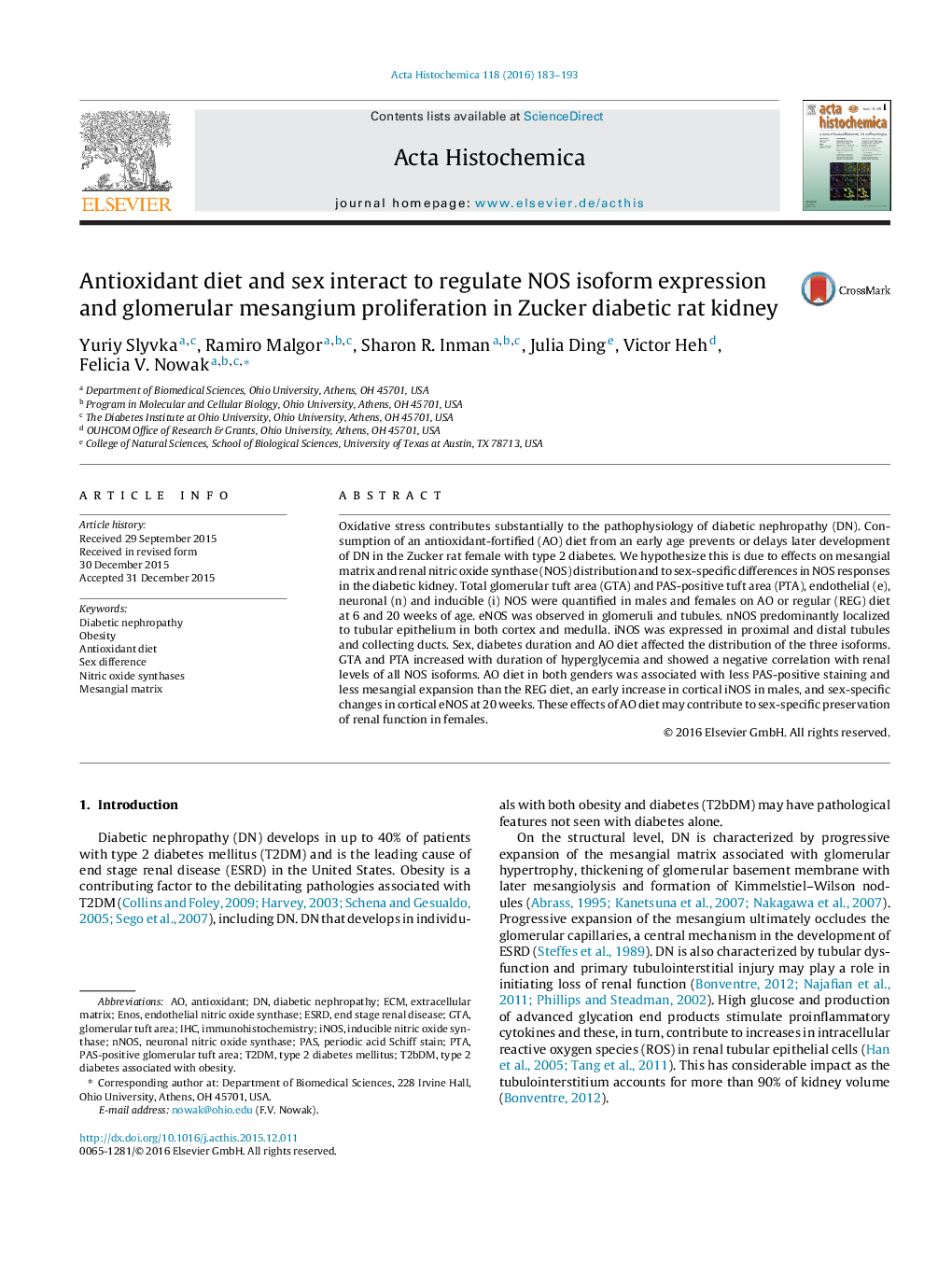| کد مقاله | کد نشریه | سال انتشار | مقاله انگلیسی | نسخه تمام متن |
|---|---|---|---|---|
| 1923383 | 1048889 | 2016 | 11 صفحه PDF | دانلود رایگان |

• Effects of antioxidant (AO) diet, sex and age are examined in diabetic rat kidney.
• AO diet interacts with sex on distribution of NOS isoforms and mesangium structure.
• These findings may underlie better preservation of GFR in females.
Oxidative stress contributes substantially to the pathophysiology of diabetic nephropathy (DN). Consumption of an antioxidant-fortified (AO) diet from an early age prevents or delays later development of DN in the Zucker rat female with type 2 diabetes. We hypothesize this is due to effects on mesangial matrix and renal nitric oxide synthase (NOS) distribution and to sex-specific differences in NOS responses in the diabetic kidney. Total glomerular tuft area (GTA) and PAS-positive tuft area (PTA), endothelial (e), neuronal (n) and inducible (i) NOS were quantified in males and females on AO or regular (REG) diet at 6 and 20 weeks of age. eNOS was observed in glomeruli and tubules. nNOS predominantly localized to tubular epithelium in both cortex and medulla. iNOS was expressed in proximal and distal tubules and collecting ducts. Sex, diabetes duration and AO diet affected the distribution of the three isoforms. GTA and PTA increased with duration of hyperglycemia and showed a negative correlation with renal levels of all NOS isoforms. AO diet in both genders was associated with less PAS-positive staining and less mesangial expansion than the REG diet, an early increase in cortical iNOS in males, and sex-specific changes in cortical eNOS at 20 weeks. These effects of AO diet may contribute to sex-specific preservation of renal function in females.
Journal: Acta Histochemica - Volume 118, Issue 2, March 2016, Pages 183–193